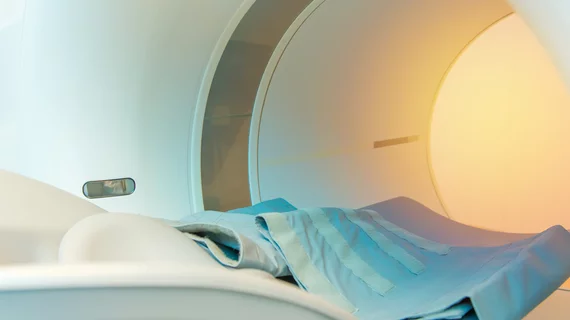Kinematic quantitative 4D CT can help differentiate patients with subtalar joint stiffness and chronic ankle instability, reported authors of a March 5 study published in the European Journal of Radiology. The technique may better personalize care for patients with ankle joint pain.
“The identification and assessment of the subtalar component of chronic ankle instability is of relevance as patient with suspected subtalar joint injury require specific treatment (most frequently physiotherapy, muscle strengthening and immobilization),” wrote Pedro Augusto Gondim Teixeira, of Hôpital Central, France, and colleagues.
The researchers also noted the clinical assessment of the subtalar joint, which sits below the ankle joint, is difficult due to its complex anatomy and natural movement pathway. There is also no objective way to determine how a patient with chronic ankle instability responds to treatment. The authors hypothesized 4D-CT may help.
Participants in the study included 13 healthy volunteers, 18 patients with clinical subtalar joint stiffness and 10 people with chronic ankle instability who were all evaluated with 4D CT from November 2011 to December 2012. Two musculoskeletal readers compared the measurements of two angles and two distances between the ankle (talus) and heel (calcaneus) bone.
Teixeira and colleagues found significant changes in all angles and distances between healthy patients and those with joint stiffness. The mean and maximal posterior calcaneal facet uncovering were much lower in patients with chronic ankle instability. The interobserver reproducibility with 4D CT was excellent, and a “considerable advantage of this semi-automatic method compared to manual measurements,” according to the authors.
They also noted, importantly, that the effective radiation dose was less than 0.1 mSv.
“These results indicate that kinematic 4-D CT can have a potential role in the evaluation of subtalar joint pathology providing means for an objective joint amplitude assessment which could improve the accuracy in identifying subtalar involvement in patients with chronic ankle instability and a more precise assessment of subtalar joint stiffness,” the researchers wrote.
Two authors on this study disclosed they participate on a non-remunerated research contract with Canon Medical Systems developing clinical testing of post processing tools for musculoskeletal CT.

